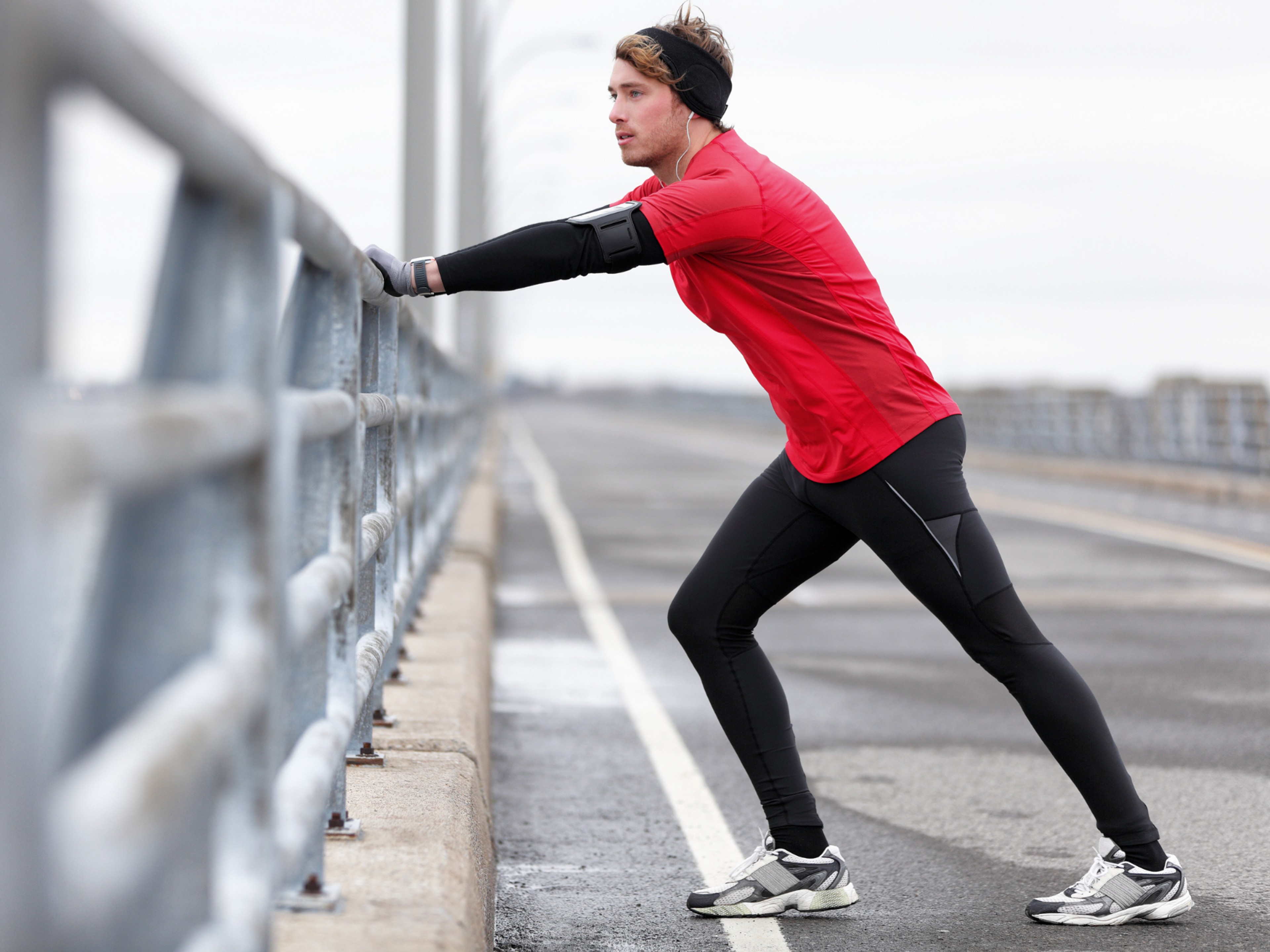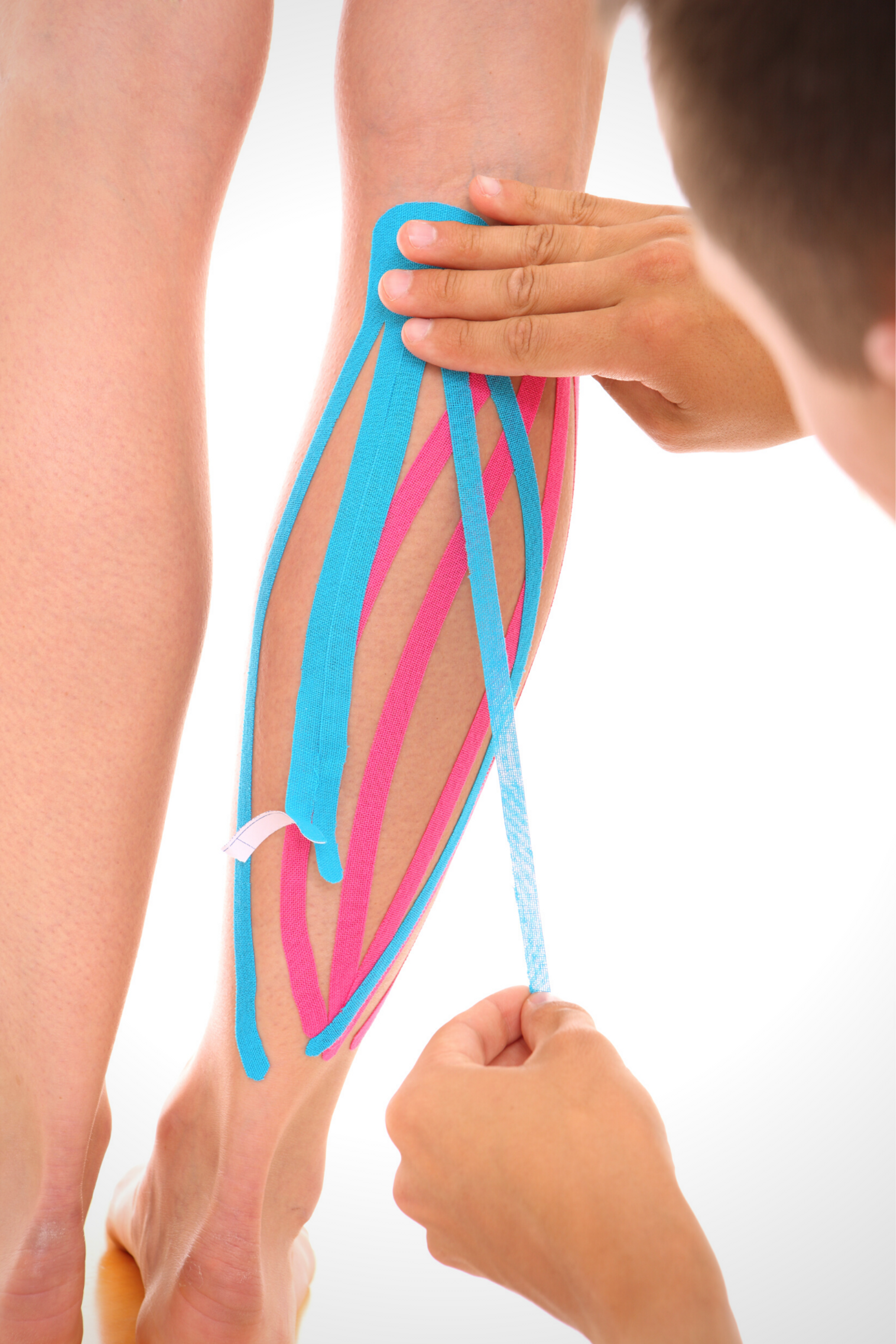Why we don’t recommend stretches for calf strain – What to do instead
Will stretching a torn calf muscle help it? Yes and no. Calf stretches can be useful during the later stages of treatment but can worsen your calf strain if done too early.
Don't stretch your calf strain too early
What is a calf stretch?
Any movement that takes your toes closer to your shinbone will stretch your calf muscles. Find examples of calf stretches for runners here.
Calf stretches can be divided into:
- Passive stretches - where you hold the stretch position for several seconds
- Active or dynamic stretches - where you repetitively move in and out of the stretch position
Stretching a torn calf muscle could do more harm than good
When you strain your calf, many people don't realize that the muscle fibers stretch beyond their limits and physically tear apart. This results in bleeding into the muscle, pain, inflammation, and loss of function.
Stretching this injured area before it has regained some strength will only cause more damage to the tissues and increase your recovery time. Your calf muscle needs time to heal before any strong stretching force is applied to it.
Choose your stretches according to your stage of calf strain healing
Never do calf stretches on a newly strained calf (injured fewer than 2 days ago).
Once the pain and inflammation start to subside, starting with gentle movements rather than strong stretching is a safer option. For example, moving your toes up and down.
Technically, these fall under dynamic or active calf stretches but are very gentle and not what people usually picture when they hear the words calf stretch.
These movements will get your foot and ankle going and help your calf muscles relax. In addition, it will help stimulate your circulation naturally in your calf without causing any significant strain or stress to the tissues.
Eccentric exercises tick more rehab boxes than stretches do for calf strain
A calf strain rehab program should aim to improve (among many other things) flexibility, strength, power, and control.
How many of those boxes do static or dynamic stretches tick? Maybe one. Flexibility.
Is there a better way to achieve these goals than simply stretching and hoping for the best?
Yes! With eccentric training.
What are eccentric calf exercises?
These are exercises where your calf muscle contracts (activates) while it lengthens.
Take a calf raise exercise done over the edge of a step, for instance. As you lower your heel down, your calf muscle contracts while it gets longer (placed in a stretched position). This is called an eccentric contraction.
As you bring your heel up and go onto your toes, the calf muscle contracts, but this time it gets shorter. This is called a concentric contraction.
Why are eccentric exercises better than stretches for calf strains?
When you build muscles with strengthening exercises, new muscle cells are formed in the direction of the force. Eccentric exercises lay new muscle cells down in series (lengthways) and lengthen the muscle.
This gives eccentrics an advantage over static and dynamic stretching because they are strengthening exercises with a built-in stretch component. (And this stretch shows similar increases in flexibility to static stretching!)
Lengthening your calf muscle while strengthening the newly gained range helps develop movement control and coordination in that new range, which improves performance. This can also reduce the risk of injury.
Stretches may help increase your range of motion, but they cannot give you the same functional benefit as eccentric exercises because they don't strengthen the muscles through the new range. It's like laying a railway track with no sleepers to support it.
A great way of building eccentric training into your calf strain rehab plan is to focus on slowing down the lowering down action during the calf raise exercises.
Still, these also have to be adapted to your calf strain's stage of healing – doing them to floor level during the early stages and over a step in the later stages.
So, should I stop stretching my calf strain altogether?
No. Often, in injury rehab, it's not an all-or-nothing approach. You must instead weigh the pros and cons and find the combination of stretching and exercises that work best for you.
Here are a few example scenarios:
- If you have a newly strained calf, very gentle active stretches or movements are usually best.
- If you want to build strength AND gain flexibility after a calf strain, eccentric exercises might help you achieve this sooner.
- If you're looking to increase flexibility, reduce tension, or get the calf muscle to 'relax and let go,' static stretches after activity may be the better choice. But this is only appropriate in the later stages of rehab.
- If you aim to fire up the calf muscles and get them ready for training, then sport-specific movements and active calf stretches would work well.
Two key takeaways about stretching and recovering from a calf muscle strain we leave you with...
If you're looking for an easy way to rehab a calf strain, where all the planning and thinking is taken care of, we can help!
The Exakt Health App incorporates what you need precisely when needed, keeping your recovery smooth and on track. So, download it now and move forward from your calf strain injury!





